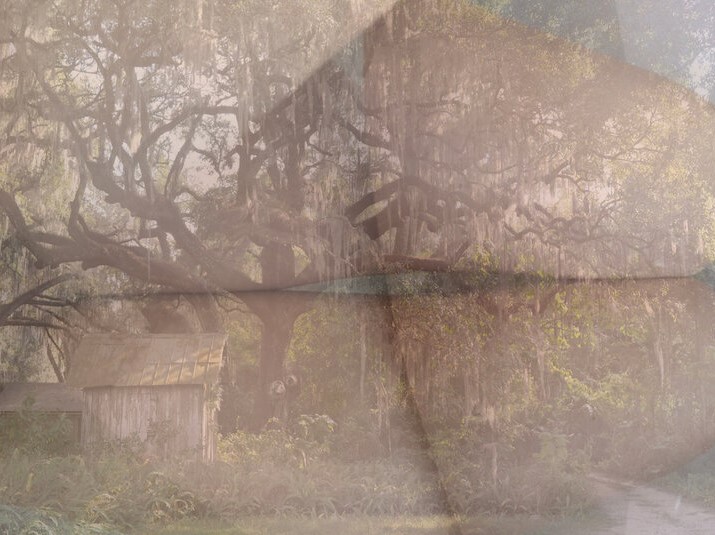These Phantom Limbs
Amy Whitaker
The phenomenology of place, how our bodies feel within a place, and how that relates to a place’s history, and our own, are inextricably tied. This includes the landscape of place, and how it informs our ever-evolving bodies and identities. We construct and create these things in the memories that live, reproduce, and transform inside of our bodies, and the other bodies against which we move constantly, shaping our own. This is an exploration of memory, identity, place, and time, and the ways in which these things can create the conditions for connections across time, allowing us to explore the ways in which time and memory can layer and shift, creating something new.
This work of historical fiction explores the concept of (un)continuity in relation to memory, identity, and place. It begins in rural Ohio with a funeral portrait, a painting of a young girl who died in 1894 at not quite twelve years old. But it also began forty years ago in a small, rural town in central Florida. This is where time and place become both murky and clear, these connections across times, places, and bodies disconnected until the inhabitation of a tiny island in southern China made the connections visible.
These parallel narratives are structured in a way that allows each to speak, shedding light upon the other parts of the work, asking questions about the ways in which stories, places, and people, interact and connect, delving deep into this question of (un)continuity. Within these narratives, the archive of audio recordings acts as a symbol of the ways in which places and lives intertwine. The archive allows you to explore these places, and the concepts presented in the audio film, more deeply through sound. Two pieces from the archive are being included in this exhibition.
Inside an old barn in Ohio, a number of Charlotte Abernathy’s recordings were recovered, resulting in the archive we have today. Many of these were wire recordings, and some were reel to reel tape. The damage to the recordings from weather and time was significant. This caused the tapes to melt into one another in random increments, and the wires to rust in places, and become very brittle in others.
You will notice many of these recordings repeat and echo. This is due to the recording media magnetically imprinting onto itself and other recordings, while wrapped around pieces of wood, rocks, and other found materials Abernathy used to store them. We often found multiple wire recordings stored on the same object, resulting in their sounds imprinting upon one another, layering in unintended sequences. The extreme temperatures and moisture are believed to have caused cracks in the tapes and rust on the wires, rendering many broken and unusable.
While the resulting recordings do not preserve the sounds as originally intended, they do provide us with a unique window into the people and places of this time, as impacted by time and nature. The results are the echoes of history, time, and place.
This body of work is the result of more than six years of research, writing, performance, field recording, sound composition, and visual work. Travels to each of these places, place-specific field recordings, and vocal performance are an important part of its creation.
About the Artist
Amy Whitaker is an interdisciplinary artist who focuses on place, body, time, and gender. Her research often focuses on phenomenology and perception, and the ways they impact and connect the construct of both self and memory. Much of her work attempts to understand the moving, experiencing body, and the phenomenology of place, through the voice and field recordings of the places, or spaces, being inhabited. She works in sound, music composition, vocalization, writing, movement, performance, video, photography, costuming, and more.
Whitaker holds an MFA in Art Practice from the School of Visual Arts in NYC (2018,) and a BA in Art History and Fine Art from the University of Cincinnati College of Design, Architecture, Art, and Planning, (2008) graduating magna cum laude.
